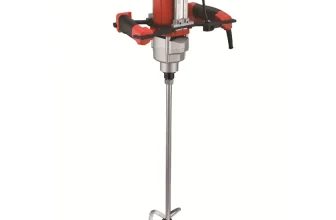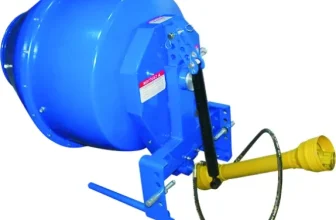The use of on-site concrete mixing is becoming increasingly popular in the construction industry. On-site concrete mixing offers numerous advantages over traditional off-site methods, including reduced costs, improved accuracy, and a more efficient process.
In this article, we will explore some of these benefits in greater detail and explain how you can make sure your next project takes advantage of all the advantages associated with on-site concrete mixing.
We will also provide some tips to help you get started and ensure that your project runs smoothly from start to finish. So whether you are a contractor looking for a more efficient way of getting the job done or a homeowner planning an outdoor project, this post will be sure to offer valuable insight into the power of on-site concrete mixing.
On-Site Concrete Mixing is Convenient and Efficient
On-site concrete mixing is incredibly convenient, especially when compared to traditional off-site methods. It eliminates the need for transportation, which can be costly and time-consuming depending on the size and scope of the project. This means that contractors are able to get started right away as soon as they arrive at the job site, saving both time and money.
On-site concrete mixing also provides contractors with greater control over the entire process. They are able to ensure that all materials are properly mixed and that the result is of the highest quality. This helps guarantee a more durable, longer-lasting structure when compared to off-site methods.
Options for Any Size Project
You will find on-site concrete mixing equipment for any size project and budget.
There are small mixers that can be operated by a single person for smaller jobs or even a DIYer. These can cost as little as a few hundred dollars and greatly reduce the amount of work needed to mix concrete on-site.
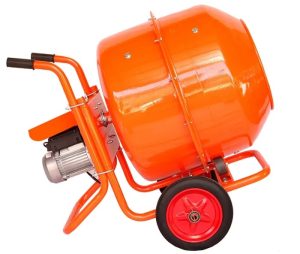
There are larger models of concrete mixers that can be pulled with a truck for larger commercial projects. These will cost much more than the single person models mentioned previously, but for projects that have the budget for them they are definitely something to consider.
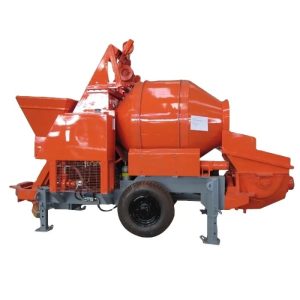
Finally, for very large projects there are options to basically build a full-size concrete mixing factory on-site. As you can imagine, this is a very expensive option and would only be reserved for very large projects.
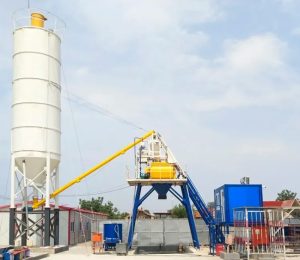
Customize and Control the Mix
One of the key advantages of on-site concrete mixing is that it allows contractors to customize and control the mix in order to ensure that it meets the specific needs and requirements of the project. This level of control ensures that the resulting structure will be stronger, longer lasting, and more durable than if created with off-site methods.
Additionally, on-site concrete mixing allows for more precise measurements, meaning that contractors can ensure an exact ratio of each element in the mix. This further increases the durability and overall quality of the final product.
Environmentally Friendly
On-site concrete mixing is becoming an increasingly popular choice in the construction industry due to its many advantages and benefits. Not only does it save money and time, but it’s also much more environmentally friendly than traditional truck delivered concrete.
Mixing concrete on-site reduces the amount of fuel used for transportation, as well as eliminating any extra waste created by transporting materials from one place to another. Additionally, on-site concrete mixers are powered by electricity rather than gas or diesel which further reduces their environmental impact.
On-site concrete mixers use less water than traditional methods since they don’t require large amounts of water for transport purposes. This means that there is less runoff into nearby rivers and streams, reducing the potential pollution caused by traditional delivery methods.
Mixers can be equipped with dust collectors which help keep air clean while working on sites with a lot of dirt and dust present. This helps reduce air pollution in nearby areas as well as making sure all workers have access to clean air during their job duties.
On-site concrete mixing helps reduce noise pollution since these machines operate at lower decibels than most other construction equipment. This makes it ideal for job sites in residential areas or near busy streets, as the noise of the mixers won’t disturb nearby residents.
Cost
One of the biggest benefits of on-site concrete mixing is its cost-effectiveness. It eliminates the time and money associated with having concrete delivered from one location to another, saving contractors both time and money.
Since the mixing is done on-site, there are no additional transportation costs associated with the job. This helps contractors save money on overall project costs and ensures that their projects are completed quickly and efficiently.
What Kind of Jobs is On-Site Concrete Mixing Best For?
On-site concrete mixing is best suited for jobs that require a moderate to large volume of concrete or complex mixtures.
It is also often used on jobs that involve frequent pouring or require a specific type of aggregate, such as agricultural silos or ponds.
Additionally, certain lifting and transport equipment may be necessary, making the transport of ready-mixed concrete difficult or impossible.
Risks of On-Site Mixing
Using an on-site mixer is associated with several risks.
Unpredictable Weather Conditions
Unpredictable weather conditions can cause issues with the quality and consistency of the concrete.
Weather conditions can have a significant impact on the quality and consistency of concrete. Extreme temperatures can cause the concrete to harden too quickly or become too soft, reducing its strength and durability.
High humidity levels can result in excessive moisture in the air which increases the water content of the concrete, making it more difficult to set and work with. Strong winds or heavy rain can also hinder mixer operation and create hazardous conditions for workers.
Mechanical Malfunctions
Mechanical malfunctions or improper usage of the mixer may result in decreased material quality or equipment damage.
Common mechanical malfunctions that occur with concrete mixers include broken belts, worn-out gears, damaged bearings, and clogs in the system.
Improper maintenance can lead to issues such as compromised seals and leaking hoses. These malfunctions can disrupt the mixing process and reduce the quality of the material produced by the machine.
Inadequate Safety Measures
Other risks include inadequate safety measures, which can lead to dangerous working conditions for personnel. Improper maintenance of the mixer may lead to costly repairs and replacements.
Without proper safety precautions, the risk of injury or even death is greatly increased.
Some types of on-site concrete mixing equipment can be complex and require training and experience to operate properly and safely. If workers are not properly trained it can create a dangerous situation.
Final Thoughts
There are on-site concrete mixing options for just about any project and budget from small mixers that can be operated by a single person to huge ones that can easily load a large truck.
So, if you’re looking for an efficient, cost-effective and environmentally friendly way to get your project done on time and under budget, then on-site concrete mixing can be a great choice.




